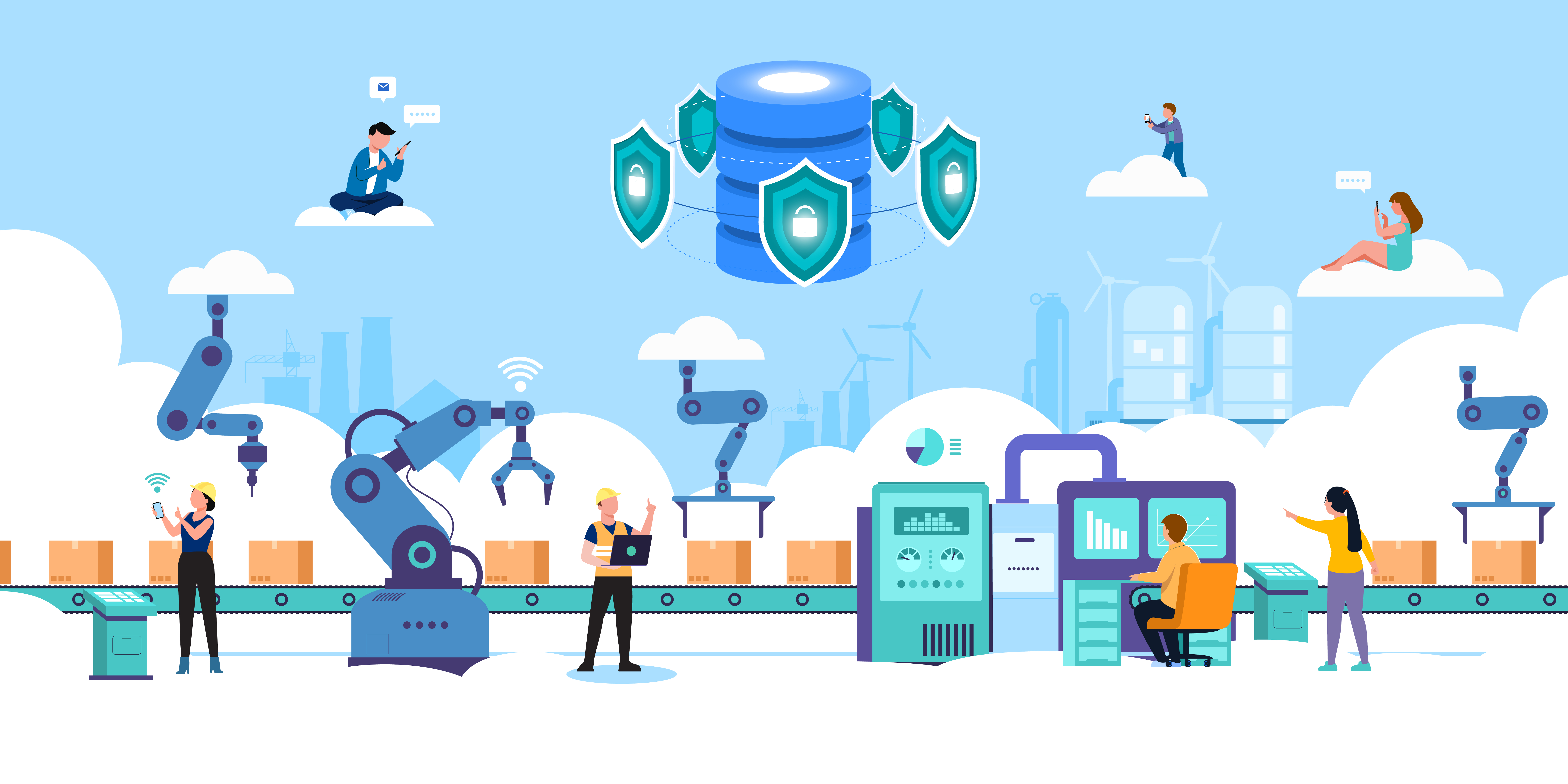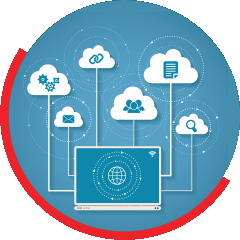With the advent of cloud technologies, there is a merit given to cloud native applications that put to use the strengths of platforms and processes developed using the cloud. There are numerous advantages to using Cloud Native Applications that can be leveraged by both medium- and large-scale organizations.
The cloud native applications are very scalable, easy to modify, and easily connect to cloud services to offer extensive capabilities too, with minimal coding.
What are Cloud Native Applications?
The rationale behind the design and development of cloud native applications is the major scalability offered by these applications. There is a special focus given to developing a programme that highlights the strengths of the cloud computing architecture.
The special feature is that the cloud native applications are executed and hosted in the cloud and are built specifically to leverage the inherent features of a cloud computing software delivery model. A key attribute of a native app is that it is software that is put to use on a specific platform or device.
Cloud native applications have the advantage of leveraging the microservice architecture, an architecture that is methodical in allocating resources to individual services that are used by the application. This feature ensures the application so developed is flexible and adaptable with reference to cloud architecture.

Cloud Native Application Characteristics
The key attribute of cloud native apps is the ability to offer business agility across diverse verticals. These apps differ from other cloud-based monolithic applications in the sense that they are designed, developed, and delivered differently, keeping the features of adaptability, scalability, and portability in mind.
In addition, these applications are highly resilient, manageable, and observable with minimal effort. It's important to mention that cloud native apps leverage the features that cloud computing frameworks have to offer, thereby helping develop loosely coupled cloud services.
As the individual services are spread across multiple servers, there is a need to create a robust network between machines using software-based architecture by application developers. This architecture is the rationale behind developing apps that can scale out horizontally as well.
Microservices are the key minor apps that are part of the robust app architecture and are packaged in individual containers that further communicate and connect via APIs. There are orchestration tools available to manage the development of these diverse components.
Cloud Native vs. Cloud-based Applications
It’s important to throw light on cloud native and cloud-based applications for a better glimpse. Of course, both these applications are possible to run on public, private, or hybrid cloud infrastructures. However, there is a difference in design.
The cloud apps are natively designed to use the cloud and cloud platforms for enhanced performance by making use of dynamic cloud infrastructure. But there is a possibility that cloud apps may not be able to fully leverage the use of core cloud features.
On the contrary, cloud native apps can fully use the core features of the cloud as they are optimized to do so and are adaptable to the dynamic nature of the cloud, thereby helping build robust applications that are flexible and adaptable.
Cloud Native Applications : Key Capabilities
Apart from the benefits of cloud native applications, some key capabilities that are worth highlighting about these applications are detailed as follows:
Microservices-based
Cloud native apps are microservices based and are able to have individual applications or modules working independently. There is a provision to reference specific data and a business goal by these independent services.
The intercommunication of these modules is made possible by the apt use of application program interfaces (APIs).
Application Program Interface (API)-Based
There is a special attribute of the API that enables interconnectivity between containers and microservices and, in parallel, provides enhanced maintenance and security. There is a capability enabled for microservices for ease of communication, acting as the buffer required amongst the loosely connected services.
Reinforced dynamic composition.
There is prominent use of container orchestration tools to control the container lifecycles, which is a tedious process.
There is complexity involved in managing resource management, load balancing, rescheduling multiple starts after an internal failure and provisioning, and while positioning containers on the pre-configured cluster nodes while using container orchestration tools.
Software Containers
The software containers are flexible to port, have integrated operating environments, and have an application and the set of software components required to run it. Containers are now the talk of the town in the software community and are a popular alternative to complex virtual machines.
This is possible by way of features as they are miniscule and typically measured in megabytes or even less. They are fast to deploy, and are reusable and easily portable. After writing an application, it is easy to move it to any platform, and most of the platforms are supported, enabling it to run without a hitch.
The application is now not bound to any specific platform, and there is an advantage to running it on any device as well as having sufficient resources to support it.
Microservices, containerization, continuous delivery, and DevOps are the major provisions of cloud-native development. Additionally, cloud native apps leverage microservices to segregate the parts of the complex application and the data they rely on.
This is the prominent difference between the traditional monolithic architecture as an easy way of sharing data services across all services.
Building a Cloud Native Application
There is a provision of using a low-code platform to overcome the complexity of traditional development methods and have the advantage of working directly with containers, microservices, and APIs to build a robust cloud native application.
There is a wise search required to shortlist the low-code platform that supports cloud native constructs and to select a full-featured platform-as-a-service. There is a consideration to be made when choosing a platform that includes a comprehensive set of tools for design, development, operations, and monitoring.
One needs to think differently while developing cloud native apps, and the traditional approach has to give way to iterative processes to create functionality quickly as services. Experienced developers are focused on how to develop and deploy the application by using the new agile development methodologies that put emphasis on modularity, reusability, and frequent code releases.
The developers should think about leveraging the services that are already available rather than reinventing the wheel. One needs to use creative developers who can knit together the services to create cloud native apps and express creativity in creating features in services that delight the end customers.

About Microservices Use in Cloud Native Applications
Prior to building and operating cloud native applications, there is a requirement to strategize and even rethink the approach to application delivery. It is worth mentioning the different capabilities of cloud native apps that include DevOps, microservices, APIs, continuous delivery, and containers.
DevOps refers to collaboration between IT operations and software developers to deliver a high-quality application. The collaboration helps in the easier creation, building, testing, and release of the software.
Microservices refer to an architectural approach involving the collection of small self-contained services that make up an application. Additionally, microservices break down an app into a series of independent services that may be referred to as modules.
Implementation of Business Goals
Each microservice has its own individual process and business goal, even if it comprises the same application. This character gives the advantage of scaling, upgrading, and deploying it on a need-basis. There is a provision to update the microservices frequently without any impact to customers as they comprise an automated system.
There is a provision for connecting microservices and containers and providing maintenance and security using the APIs. Continuous delivery refers to the process of implementing software changes incrementally using automation.
This gives an impetus to organizations to deliver software more frequently to receive continuous feedback that is helpful in application and feature enhancement. Containers allow the isolation of applications logically, making it possible to be run without physical resources.
Containers are the main reason behind microservices running independently of each other. Also, containers are considered faster and more efficient when compared with traditional virtual machines.
There is a potential for operating system level virtualization, making it possible to have multiple instances across multiple respective containers, each with a unique writable file system and quota of resources. This is the rationale behind individual microservices in respective containers, helping create robust cloud native applications.
The Benefits of Cloud Native Applications and Sonata Advantage
Application Deployment and Management Flexibility
The primary benefit of these applications is the ability to deploy them individually and manage them on a per-requirement basis. A well-designed and developed application is strong enough to withstand any infrastructure outage and remain online as these apps are more resilient.
Flexibility is one of the major benefits of Cloud Native Applications. There are flexible and easier deployment options for these apps across the network as they are more robust and smaller apps compared to traditional apps.
As the cloud native services are prominently based on certain standards and on open source technology, there is a reduced vendor lock-in, providing workload portability and interoperability.
There is an advantage to using the DevOps automation feature to provide continuous delivery with an enhanced capability to update services and deploy software without any major downtime.
Adaptability, Scalability, and Portability
There is a possibility to tweak the cloud native application as per the needs of the business without any dependency that does not tie down the customers to a particular version of software. There is prominent usage of software-defined infrastructure, putting an end to any hardware dependency.
This is a path to horizontal scalability rather than requiring the addition of more expensive processors, storage, or memory to existing servers. There is a provision to leverage the containers and write applications that are operational on everything from smartphones to mainframes without any change of code.
With the ever-increasing usage of edge computing, a distributed processing architecture that enables automated decisioning in the network, it's possible to deploy applications wherever needed.
Developed using advanced programming languages
There is a selection of web-centric languages to develop cloud native apps by using languages like HTML, CSS, Java, JavaScript,.NET, Go, Node.js, PHP, Python, or Ruby that give a lot more flexibility for developers to develop web-centric applications.
Working with more flexible and modern languages and platforms is of tremendous help when it comes to attracting top-notch professionals to work in the organization.
Updatability
The rationale behind developing cloud native apps is to build highly available, resilient, and regularly updateable apps. It is possible to update the app on a need-basis as these are developed and hosted on the cloud.
Traditional on-premises applications are typically updated infrequently and with a waterfall methodology.
The updatability advantage of cloud native apps provides a productivity boost for engineers to focus on competitive advantage and deliver new features to customers at a higher frequency in order to have updated and competitive applications.
Elasticity and Multitenancy
Cloud native applications are built with the focus of leveraging the elasticity factor of cloud applications by flexing consumption based on the needs of the hour. There is no need for physical provisioning of additional infrastructure required to scale the applications, as is true for traditional applications.
This also results in a tremendous saving of infrastructure expenses as the cloud allows one to pay for what is being used, thereby helping avoid overprovisioning of extra infrastructure.
As this application is being used from a virtual space, there is a possibility of sharing resources with other applications as well, using a multi-tenant model, thereby bringing an efficiency boost to development teams.
The Advantage of Automation
Cloud-based applications have the advantage of greater redundancy due to the scale and spread of cloud-based geographically spread data centres, helping manage the outages quickly and redirect traffic to another close-by region, avoiding costly downtime.
These applications have techniques that open up a wealth of other automation capabilities for developers to build and manage other more pressing challenges.
These applications have the feature of being stateless, which opens up the possibility to scale easily across servers, cache more easily for a performance boost, use diminished storage, and avoid any unwanted lock-in to any specific server, and all of this is configured to be used automatically.

Sonata Advantage
The aforementioned benefits are just the tip of the iceberg of the large-scale benefits organizations can avail of by getting these applications developed by Sonata.
Sonata software developed these applications using multi-tech cloud capability and has helped Independent Software Vendors (ISVs) scale their operations by providing state-of-the-art products and services with enhanced features to their global end customers.
There are apt skills available with resources to have a good grasp of how to get the most out of the cloud. For ISVs, the change can be hard, but Sonata understands the nuances of developing cloud-native apps and makes the ISVs adapt to the needs of the hour.
Rearchitecting the applications for the cloud is a significant engineering challenge that is made easy by Sonata. Sonata provides the right skills and helps adapt to the cloud-centric security model and manage the changing profile of a cloud environment with ease.
These applications are developed using the latest tools and methodologies and help save the product engineering organizations' costs and help them provide these applications at reduced prices and with faster time to market.
Sonata has skilled resources with experience in modern application development and cloud technologies developing advanced applications for ISVs. Sonata, by virtue of having catered to Fortune 100 software ISVs, ensures there is a smooth transition to the cloud for the ISVs without any chance to stumble upon any hindrance during migration.
Benefit from Sonata’s Unique Platformation™ approach.
You will benefit in various ways as Sonata will apply its unique Platformation™ approach by developing digital platforms and working on product engineering to ensure ISVs develop products that are connected, open, intelligent, and scalable.
Sonata’s Platformation™ methodology brings together industry expertise, platform technology excellence, design innovation, and strategic engagement models to deliver sustained value to customers.
The Cloud Native apps are developed for ISVs using this proprietary methodology for a robust end product. The unique proprietary approach ensures cloud native apps are built using vertical agnostic multi-cloud platforms (AWS, Microsoft Azure, and Google Cloud Platform) as part of the Digital Platform and Product Engineering Capability.
Conclusion
To sum it up, Sonata has been developing cloud native applications for ISVs that are reliable, easy to manage, flexible, and portable. Also, saves time and the cost of development. One of the benefits of Cloud Native Applications is the ability to scale out as needed, eliminating the need for excessive investment in infrastructure.
This will help in enhancing the productivity of engineering resources, save time and money for the organization, and give it a tremendous competitive advantage.

